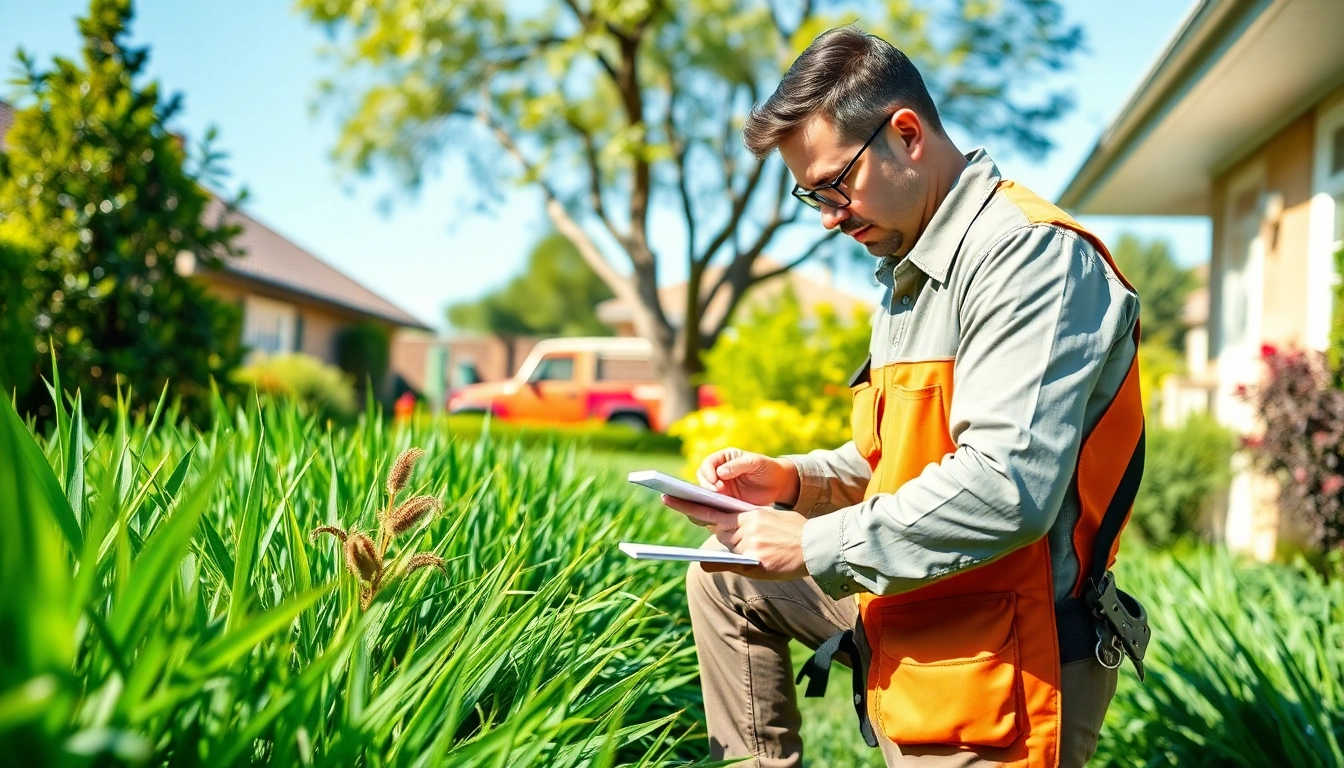Understanding Pest Management Basics
Pest management encompasses a range of practices designed to control and reduce the negative impacts of pests on human health, the environment, and economic interests. Effective pest management aims to achieve this balance through sustainable, effective, and often innovative strategies. In this article, we will explore the essential components of pest management, its significance, and the various approaches to keep our homes and businesses free of unwanted guests.
Definition and Importance of Pest Management
Pest management refers to the organized approach to preventing, monitoring, and controlling pest populations that can negatively affect health, property, and the environment. These pests can range from insects and rodents to fungi and weeds. Understanding the ecological role of these organisms is crucial, as they can contribute positively or negatively to the ecosystem.
The need for pest management arises from the various threats pests pose. For example, certain insects can damage crops, while rodents may spread diseases. The Institute of Food Technologists notes that pests account for an estimated 10-20% loss in crops, highlighting the economic importance of effective pest control strategies. Effective pest management balances the need for public health and safety with minimal environmental impact.
Common Types of Pests and Their Behavior
Identifying common pests and their behaviors improves pest management efficiency. Here’s a brief overview of notable pest categories:
- Insects: Includes ants, termites, cockroaches, and bed bugs. They often invade homes seeking food, shelter, or mates.
- Rodents: Mice and rats are notorious for invading residential and commercial properties. They are known carriers of diseases and can damage structures and food supplies.
- Weeds: These unwanted plants can out-compete crops or ornamental plants for nutrients, light, and space. Effective weed management is crucial in agricultural settings.
- Fungi: Fungal infections can devastate crops and lead to food safety concerns. Some molds can produce mycotoxins harmful to health.
Understanding the behavior and life cycle of these pests enables the application of targeted control methods, reducing their populations efficiently and effectively.
Benefits of Effective Pest Management
Implementing an effective pest management strategy provides numerous benefits:
- Health Protection: Effective pest management reduces exposure to disease-carrying pests, therefore safeguarding human health.
- Economic Savings: By preventing infestations, businesses and homeowners can save the costs associated with repairs, lost revenue, or health-related expenses.
- Environmental Sustainability: Integrated pest management (IPM) practices aim to minimize pesticide use and enhance biodiversity, promoting healthier ecosystems.
- Improved Aesthetics: Keeping properties pest-free contributes to a cleaner and more enjoyable environment for residents and visitors alike.
Integrated Pest Management (IPM) Techniques
Integrated Pest Management (IPM) is a holistic approach that combines various strategies to manage pests effectively. The objective of IPM is to manage pest populations at acceptable levels with minimal ecological disruption.
Fundamental Principles of IPM
The principles of IPM involve several strategic components:
- Monitoring and Identification: Regular monitoring helps to identify the presence of pests and assess their damage levels, guiding control decisions.
- Prevention: Developing proactive measures to prevent pest occurrences through education, community involvement, and proper sanitation practices.
- Control Methods: Utilizing a variety of control measures such as biological, cultural, and chemical options based on the specific pest situation.
- Evaluation: Continuously assessing the effectiveness of the management strategies implemented and adjusting them as needed.
Through these principles, IPM strives to use the most effective, economical, and environmentally safe methods for pest control.
Biological Control Methods
Biological control involves the use of natural enemies to control pest populations. This can include introducing predators, parasites, or pathogens that specifically target the pest species.
Examples include:
- Ladybugs: These beetles feed on aphids, thereby naturally controlling their population in gardens and agricultural settings.
- Nematodes: Beneficial nematodes act as parasites to certain insect larvae, effectively reducing their numbers in soil environments.
- Microbial Pesticides: Utilizing organisms like Bacillus thuringiensis can control caterpillar pests while having limited effects on non-target species.
Biological methods are considered sustainable and environmentally friendly, provided they are carefully implemented to avoid imbalances in the ecosystem.
Cultural and Habitat Manipulation Practices
Cultural practices involve modifying agricultural practices to create an environment less conducive to pest outbreaks. Key strategies include:
- Crop Rotation: Alternating different crops can disrupt pest life cycles and reduce infestations.
- Sanitation: Keeping landscapes and homes clean reduces pest habitats, minimizing exposure risks.
- Water Management: Proper irrigation practices can prevent creating conducive environments for pests such as mosquitoes.
By adjusting these cultural practices, homeowners and farmers alike can work towards minimizing pest problems sustainably.
DIY Pest Management Solutions
For homeowners, understanding and implementing DIY pest management solutions can be both cost-effective and efficient. While professional services are invaluable, many simple strategies can help prevent pest issues.
Safe and Effective Home Remedies
There are several DIY solutions that can effectively manage common pests. Some popular remedies include:
- Essential Oils: Oils such as peppermint, tea tree, and eucalyptus can repel pests like spiders and mosquitoes. Mixing these with water and spraying around entry points can deter invaders.
- Soap and Water: A simple mixture can kill many soft-bodied insects like aphids by suffocating them when sprayed directly.
- Vinegar: This can be effective in repelling ants. A vinegar-water mixture can be sprayed along ant trails to disrupt their pheromone signals.
These remedies provide a non-toxic approach to pest control, enabling homeowners to feel safer about their pest management decisions.
Prevention Tactics for Homeowners
Proactive prevention is key to minimizing pest issues in and around the home. Some essential tactics include:
- Sealing Entry Points: Inspecting foundations, windows, and doors for cracks or gaps can prevent pests from entering.
- Regular Cleaning: Keeping food stored properly and maintaining cleanliness helps deter pest attraction.
- Proper Waste Management: Using sealed containers for trash and frequently disposing of waste reduces food sources for pests.
By adopting these habits, homeowners can significantly decrease the chances of pest infestations.
When to Call a Professional
While DIY methods can be effective, certain situations require professional intervention. Signs that indicate the need for expert assistance include:
- Presence of large infestations.
- Recurring pest issues after attempting DIY solutions.
- Concern over health risks associated with specific pests.
- Challenges in identifying the pest or proper control methods.
Professional pest control services bring expertise, advanced techniques, and safety measures to handle pest issues that may be beyond the scope of typical DIY methods.
Commercial Pest Management Considerations
Businesses face unique challenges regarding pest management, as infestations can directly affect reputation and revenue. A strategic approach is essential for effective management in commercial settings.
Importance of Regular Pest Inspections
Regular pest inspections are crucial for businesses to maintain a pest-free environment. Professional inspectors assess vulnerabilities and provide tailored solutions to mitigate risks. These inspections help in:
- Early Detection: Identifying potential infestations before they become significant problems.
- Compliance: Meeting health and safety regulations that protect employees and customers.
- Asset Protection: Safeguarding property and stored goods from damage caused by pest activity.
Utilizing a consistent inspection schedule establishes a proactive pest management plan rather than a reactive one.
Catering to Different Business Needs
Every business environment has its unique pest management requirements based on industry, location, and services offered. Tailored pest management strategies consider:
- Type of Business: For example, restaurants require strict compliance with food safety standards, while warehouses prioritize safeguarding stored goods.
- Seasonal Variations: Certain industries experience variations in pest populations based on the season. Pest management plans should accommodate those changes.
- Employee and Customer Safety: Ensuring that pest control measures are effective yet safe for people around.
Businesses must work with pest management professionals to establish strategies that meet their unique operational needs.
Compliance with Pest Management Regulations
Various laws and regulations govern pest management in commercial settings. Compliance with these regulations not only helps avert legal troubles but also enhances a business’s credibility. Key elements of compliance included:
- Pesticide Usage: Understanding the laws surrounding pesticide application and record-keeping.
- Notification Requirements: Informing employees and customers regarding pest control measures taken in the facility.
- Health Regulations: Adhering to health codes regarding pest presence in food-service establishments.
Professionals engaged in pest management must remain informed about current regulations that apply to specific industries, ensuring compliant operations.
Measuring the Success of Pest Management Efforts
Evaluating the effectiveness of pest management strategies is essential for continuous improvement. Successful pest management requires data-driven insights into performance metrics over time.
Key Performance Indicators to Track
Key performance indicators (KPIs) play an integral role in assessing pest management strategy effectiveness. Important KPIs include:
- Pest Population Levels: Tracking reductions in pest numbers post-treatment.
- Customer Feedback: Customer reports on pest sightings and satisfaction with pest control measures.
- Incident Reports: Documenting occurrences of pest-related problems to identify trends.
Regularly assessing these indicators provides insights into the ongoing effectiveness of pest management strategies.
Customer Satisfaction and Feedback
Gathering customer feedback regarding pest management efforts is critical for refining processes and customer-facing practices. Establishing communication channels via:
- Surveys on service quality.
- Open lines of communication for reporting pest incidents.
- Follow-ups after pest control visits to assess effectiveness.
Listening to customers fosters trust and allows businesses to enhance their services effectively.
Adjusting Strategies for Greater Effectiveness
Continuous improvement is essential in pest management. Using insights gathered from KPIs and feedback allows for:
- Adjusting methods based on pest resistance patterns.
- Updating prevention tactics according to seasonal changes or new regulations.
- Modifying communication strategies to enhance engagement with stakeholders.
Being adaptable strengthens a pest management program, ensures sustainable practices, and protects health and property.



